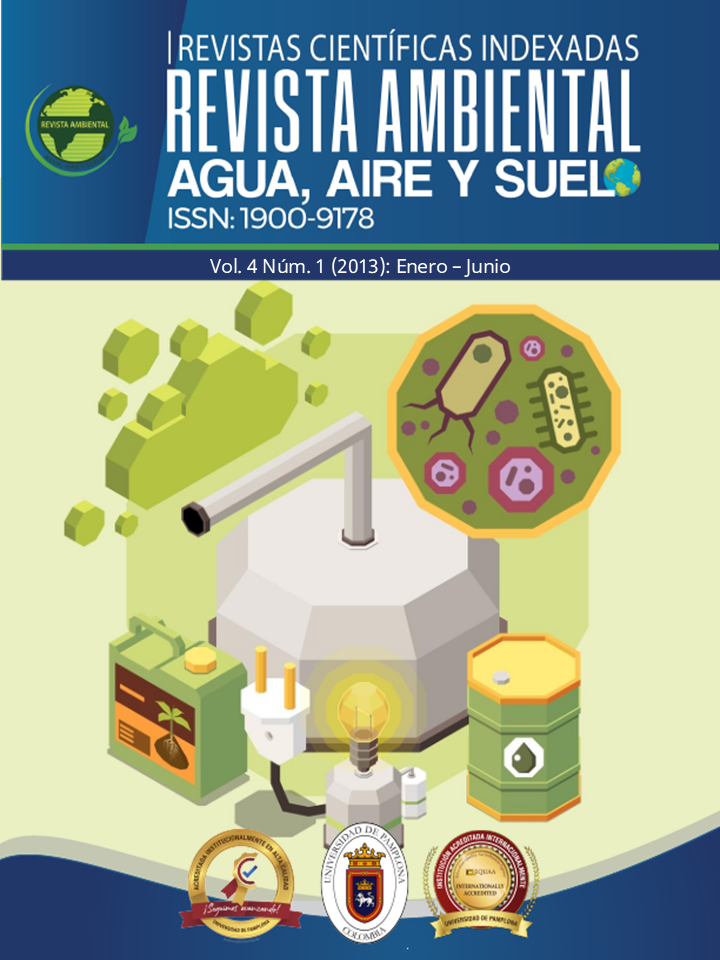Diagnosis and environmental management of the El Escorial micro-basin, Pamplona municipality
DOI:
https://doi.org/10.24054/aaas.v4i1.2016Keywords:
environmental diagnosis, geomorphology, environmental impact, micro-watershedAbstract
This article presents the classroom project developed in the Q. El Escorial micro-watershed, in the municipality of Pamplona, during 2011-2012, whose objective was to carry out the diagnosis and environmental management of the micro-watershed under study. To this end, existing information was collected and evaluated, and a survey was conducted among the community in the study area to determine water resource uses, water catchments, types of agrochemicals used, and types of crops. In addition, an inventory of flora and fauna, water bodies, and soil identification was carried out. The results obtained showed that, due to its shape and compactness coefficient, the micro-basin tends to generate flooding and high water levels along its course, which is reflected in the lower part of
the lower part of the watershed. It was observed that there is a wide variety of plant species in the micro-watershed, which are of great importance for the ecosystem present in this area, making it essential to develop appropriate management practices for their conservation. The most significant impacts generated by anthropogenic activity in the region were determined, which significantly affect the structure and relationship between the various environmental components present in the micro-watershed.
Downloads
References
Brooks, (1998). The occurrence and impact of sedimentation in Central Pennsylvania wetlands.
Comisión de Regulación de Agua Potable y Saneamiento Básico (CRA). (2000). Reglamento técnico del sector de agua potable y saneamiento básico (RAS-2000). Disponible en: http://cra.gov.co/apcaafiles/37383832666265633962316339623934/5._Sistemas_de_potabilizacion.pdf
IDEAM. (2004). Guía técnico-científica para la ordenación y manejo de cuencas. Bogotá, Colombia.
Magrini, (1990). Metodología para la identificación del impacto ambiental. Disponible en: http://www.unalmed.edu.co/~poboyca/documentos/documentos1/documentos-Juan%20Diego/Plnaifi_Cuencas_Pregrado/Oct_26/Cap%EDtulo%20Libro%20m%E9todos%20valoraci%F3n%20EIA.pdf
MINAMBIENTE. (2010). Monitoreo y evaluación del manejo de cuencas hidrográficas. Estudio Nacional del Agua 2010. Sistema de Información Ambiental de Colombia. Disponible en: http://www.siac.gov.co/contenido/contenido.aspxcatID=188&conID=910
Ojeda, D. (1999). El enfoque físico, social y cognoscitivo como una estrategia para el ordenamiento y manejo de cuencas en Colombia.
Organización de las Naciones Unidas para la Alimentación y la Agricultura (FAO). (2007). Departamento de Agricultura.
Sanz, (1991). Metodologías para la identificación y valoración del impacto ambiental.
Sistema de Información Ambiental de Colombia (SIAC). (2002). Decreto N° 1729 de 2002, Cuencas Hidrográficas. Disponible en: https://www.siac.gov.co/documentos/DOC_Portal/DOC_Agua/5_Planeacion/20121029_Decreto_1640_2012.pdf
Downloads
Published
Issue
Section
License
Copyright (c) 2022 REVISTA AMBIENTAL AGUA, AIRE Y SUELO

This work is licensed under a Creative Commons Attribution-NonCommercial 4.0 International License.










